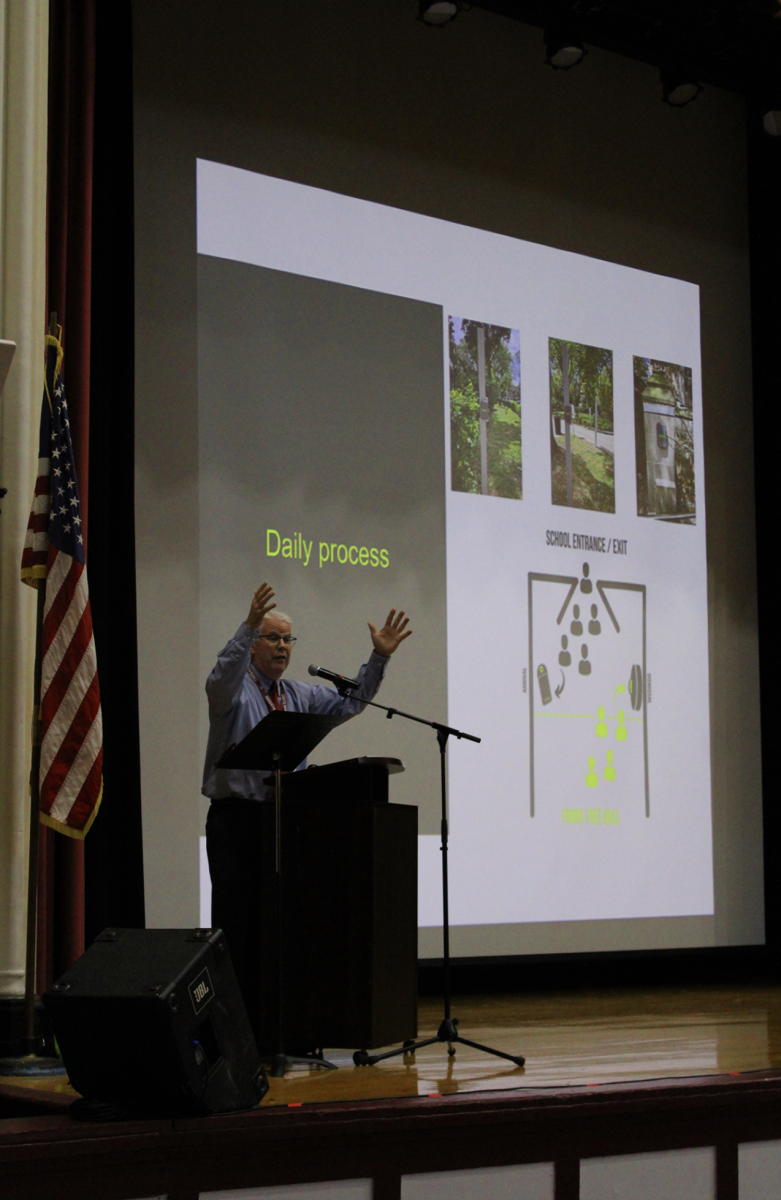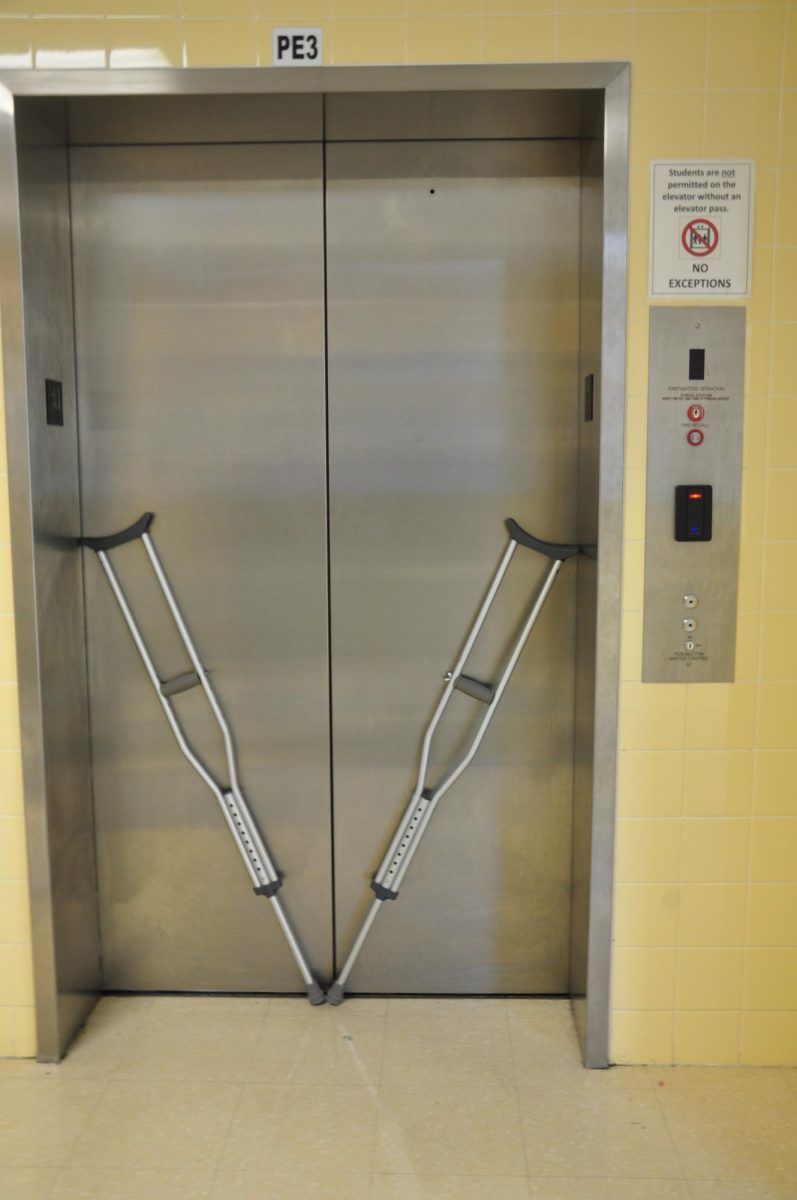It’s not unheard of when a student raises their hand for a hallway pass, and ends up returning to class 20 minutes later. This pattern has remained constant, with students typically having little to no repercussions as a result of their actions. It was starting to seem as if this pattern of skipping would remain everlasting, as students have been exploiting the physical pass system for as long as there have been passes.
However, the school has decided it’s time for a change. SmartPass, a new virtual pass system, has just recently been implemented. It restricts the time a student can spend outside of their classroom, and depending on where they are going, students are limited to a maximum of ten minutes each day with only being allowed at most two passes per day.
Some staff members feel like the same concerns will exist, students will still not come back to class or take too long. An anonymous faculty member disagrees, explaining their opinion that this new pass won’t stop kids who usually skip from skipping. “Kids in the hallway that aren’t supposed to be there are abusing the passes. It’s not passes that are the problem – It’s the kids who don’t have holes in their schedule that are cutting classes. They’re not being swept; they’re just roaming the halls.” She added, “I believe that the students taking passes are not the issue in the hallways and that the data that will be collected will show that most passes are given to good students who are not the problem.”
Furthermore, when asked, many teachers think that the new SmartPass system takes away from the already little amount of time they have to teach when having to pause their lessons to create a virtual pass for their students.
Others view the addition of SmartPass as a blessing. According to Ms. Quiñones, everyone with access to SmartPass can see every student that is over their time limit and out with a digital pass. She expressed her fondness for the new system. “I like it because parents ask: Why is my child not doing well? Well, the kid’s out of the classroom for 10 minutes. When are they getting instruction?”
“It’s an efficient way of tracking who’s out of the class and for how long. From what I’ve seen, teachers who have used it think of it as a pretty good thing and would like to continue using it. I think it would only be a problem to use for teachers who aren’t technologically savvy,” said journalism teacher and dean, Mr. Danza, when asked why this policy was implemented in the first place.
Throughout the process of switching over to digital passes, there is one thing that remains clear: the success of SmartPass as a whole ultimately depends on how students and teachers choose to follow it. Each classroom will eventually get a Kiosk so that the students can sign themselves back in when they return from their trip.
It’s not unheard of when a student raises their hand for a hallway pass, and ends up returning to class 20 minutes later. This pattern has remained constant, with students typically having little to no repercussions as a result of their actions. It was starting to seem as if this pattern of skipping would remain everlasting, as students have been exploiting the physical pass system for as long as there have been passes.
However, the school has decided it’s time for a change. SmartPass, a new virtual pass system, has just recently been implemented. It restricts the time a student can spend outside of their classroom, and depending on where they are going, students are limited to a maximum of ten minutes each day with only being allowed at most two passes per day.
Some staff members feel like the same concerns will exist, students will still not come back to class or take too long. An anonymous faculty member disagrees, explaining their opinion that this new pass won’t stop kids who usually skip from skipping. “Kids in the hallway that aren’t supposed to be there are abusing the passes. It’s not passes that are the problem – It’s the kids who don’t have holes in their schedule that are cutting classes. They’re not being swept; they’re just roaming the halls.” She added, “I believe that the students taking passes are not the issue in the hallways and that the data that will be collected will show that most passes are given to good students who are not the problem.”
Furthermore, when asked, many teachers think that the new SmartPass system takes away from the already little amount of time they have to teach when having to pause their lessons to create a virtual pass for their students.
Others view the addition of SmartPass as a blessing. According to Ms. Quiñones, everyone with access to SmartPass can see every student that is over their time limit and out with a digital pass. She expressed her fondness for the new system. “I like it because parents ask: Why is my child not doing well? Well, the kid’s out of the classroom for 10 minutes. When are they getting instruction?”
“It’s an efficient way of tracking who’s out of the class and for how long. From what I’ve seen, teachers who have used it think of it as a pretty good thing and would like to continue using it. I think it would only be a problem to use for teachers who aren’t technologically savvy,” said journalism teacher and dean, Mr. Danza, when asked why this policy was implemented in the first place.
Throughout the process of switching over to digital passes, there is one thing that remains clear: the success of SmartPass as a whole ultimately depends on how students and teachers choose to follow it. Each classroom will eventually get a Kiosk so that the students can sign themselves back in when they return from their trip.






